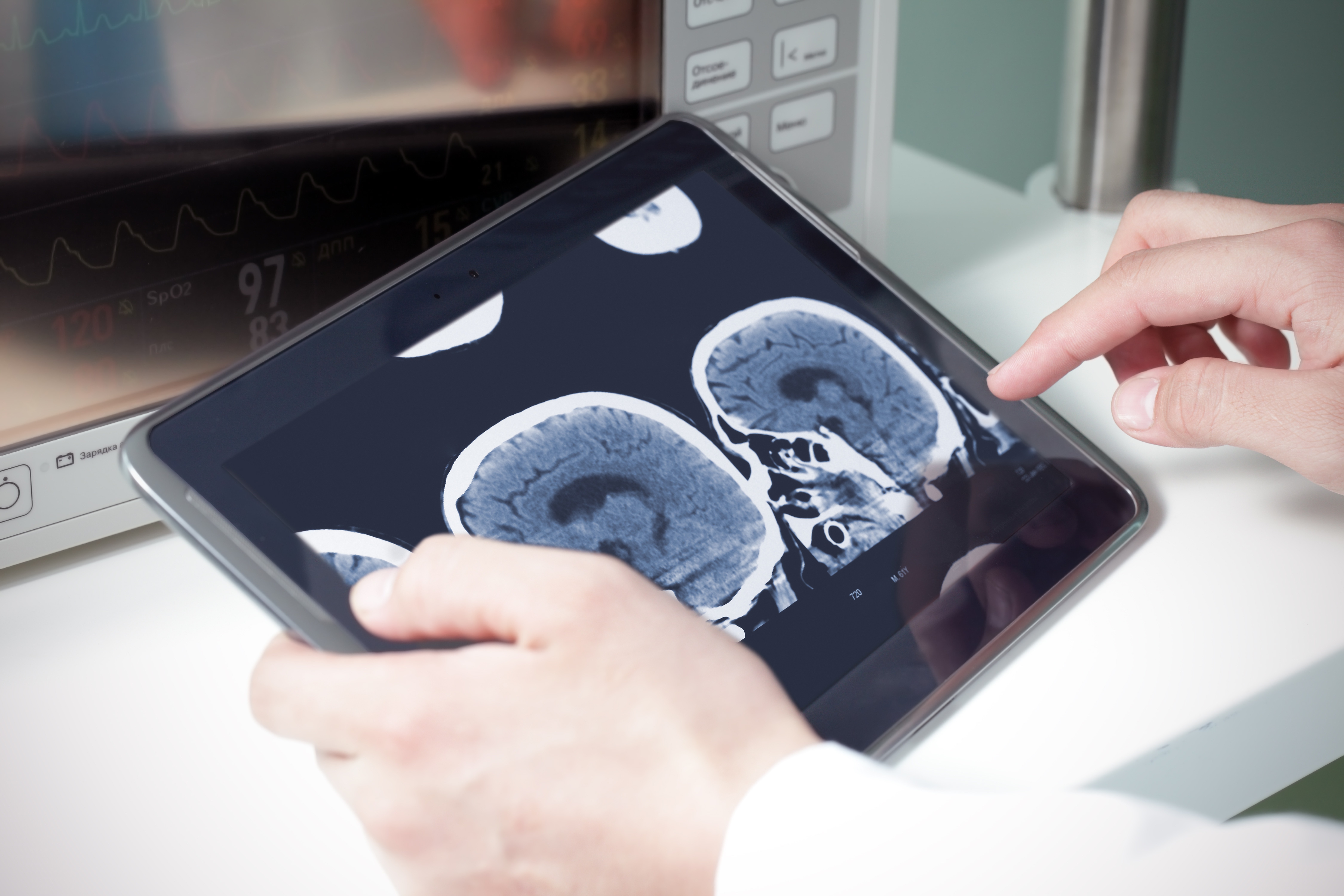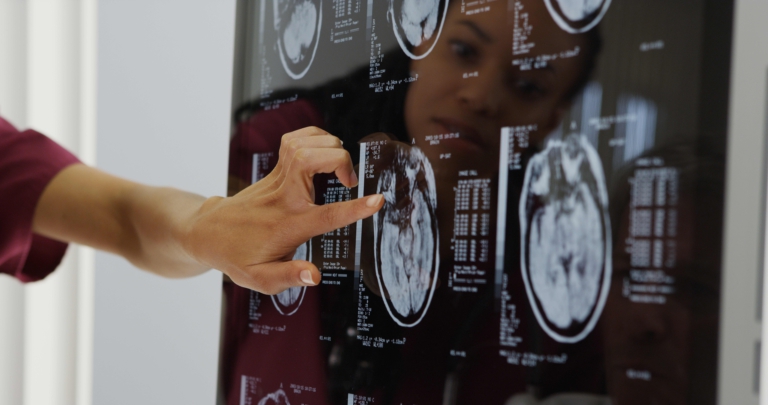Ensure Accuracy with a Subspecialist Second Opinion
Between the advances in imaging technology and the intricacies of the human body, radiology exams can be extremely difficult to read. With such a wide scope of ever-changing information in every specialty of medicine, diagnostic skills, and imaging techniques to learn, it’s impossible for an individual physician to master all areas and modalities in imaging.
That’s why radiologists pursue extra training in a specific area of radiology, otherwise known as doing a fellowship in a further subspecialty of radiology. Having a specialist reading exams reduces errors, ensuring patients and their doctors receive accurate interpretations.
What is Subspecialty Radiology

In radiology, doctors can either become general radiologists (similar to a primary care doctor) or they can specialize in a specific area of radiology. Subspecialization enables a physician to take their expertise even deeper, learning everything there is to know about one specific subcategory of medicine.
This can mean specializing in a particular patient group (such as pediatrics), an entire body system (such as the muscular or nervous systems), or focus even more narrowly (such as sports injuries or oncological imaging).
Radiology subspecialists parallel medical subspecialists: a doctor may become a neurologist or a neurosurgeon – the radiologist specializes in Neuroradiology; a doctor may become an orthopedic surgeon – the radiologist specializes in Musculoskeletal Radiology; a doctor may become a pulmonary specialist or chest surgeon – the radiologist specializes in chest or cardiac radiology, etc.
CONNECT WITH A SPECIALIST
Take Charge of Your Health
Get a second opinion from a radiology specialist in 3 easy steps.
Benefits of Subspecialty Interpretation
Getting your radiology scans interpreted by a subspecialty radiologist is extremely important for both diagnosis and treatment planning. In some cases, such as cancer, a specialty read can mean the difference between life and death.
Accuracy
Highly skilled subspecialty radiologists have higher accuracy rates and a lower percentage of false-positive exams (images that are falsely interpreted as positive for disease or pathology).
Efficiency
The sooner a patient receives an accurate diagnosis, the sooner they can begin the right treatment plan. Subspecialty reads help speed up this process by eliminating inconclusive reports that can result in nonessential doctor visits and additional imaging tests.
Cost
Subspecialized radiology can ensure costs are kept to a minimum by reducing a patient’s probability of getting unnecessary appointments, procedures, and additional exams associated with a misdiagnosis; similarly, it may identify that a certain treatment or surgical procedure is not necessary.
Peace of Mind
When it comes to your health, knowing that you did get the right diagnosis, or knowing a specialist reviewed your study to verify it was okay or found something that can be treated, is priceless. You have the right to be sure.
Check out our Patient Story series to hear first-hand accounts from second opinion patients.
Types of Subspecialty Radiologists

Radiology subspecialties combine expertise with experience, nurture research and discovery, and ensure accuracy. While there are many types of diagnostic imaging subgroups – these are some of the main subspecialty areas in radiology:
Pediatric Radiology:
A child’s body differs drastically from an adult’s, both physiologically and biologically. Yet, 90% of pediatric radiology is read by a generalist, resulting in a high misdiagnosis rate, as well as unnecessary additional image testing. Pediatric radiologists have a deep understanding of the unique anatomy of infants, children, and adolescents. Experts in selecting the best imaging tests and techniques to diagnose illness, injury, and disease in children, pediatric specialists provide the most accurate interpretations.
Neuroradiology:
Physicians who specialize in neuroradiology are experts in diagnosing disorders of the brain, sinuses, neck, spine and spinal cord, and the central nervous system. They use complex techniques to diagnose and treat a variety of conditions such as brain tumors, brain cysts, brain lesions, spine lesions, MS, stroke, cancer, chronic headaches, sinus issues, degenerative diseases such as Alzheimer’s disease, and more.
Breast Radiology:
Radiologists specializing in breast imaging are highly skilled in mammography, 3D tomosynthesis, breast MRI, breast ultrasound, and other diagnostic breast procedures. They are experts in breast biopsies, wire/seed localization, and sentinel lymph node mapping. Mammography misses approximately 13% of breast cancers, with an even higher rate in cases where breast density is present. The chance of receiving a false positive (after one mammogram) is anywhere from 7-12%. With such high inaccuracy rates – it’s recommended second opinion reads be routine for all breast imaging.
Prostate Radiology:
Radiologists who specialize in prostate MRI are highly trained and experienced in detecting prostate cancer. Using complex techniques, they evaluate the stage of cancer, check if it has spread outside of the prostate gland, and play a vital role in determining the best treatment plan for patients. About 27% of prostate cancer biopsies are unnecessary – an image interpretation performed by a subspecialist helps prevent nonessential invasive testing.
Nuclear Medicine and PET Scans:
Nuclear medicine physicians specialize in the use of nuclear medicine technology to detect and stage cancer in various parts of the body. Nuclear scans are administered with low doses of radioactive medication to produce high-quality diagnostic images. Subspecialists are then able to diagnose disease, tumors, infection, and other disorders by evaluating organ function.
Abdominal Radiology:
Abdominal subspecialty trained radiologists are experts in diagnosing and evaluating abnormalities in the abdomen and pelvic regions. They detect issues in the liver, gallbladder, spleen, kidneys, adrenals, pancreas, stomach, intestines, ureters, bladder, prostate, ovaries, and uterus. They’re highly skilled in radiography, gastrointestinal and genitourinary fluoroscopy, general ultrasound and doppler ultrasound, CT, colonography, enterography, MRI, oncologic imaging, and non-invasive vascular imaging.
Cardiac Radiology:
Cardiac subspecialists play a crucial role in catching and treating heart disorders as early as possible. Their expertise allows them to ensure maximum patient safety. Special techniques such as Coronary Calcium scoring, Coronary Computed Tomography Angiography, and Cardiac MRI are used in the assessment of heart function and disease.
Musculoskeletal (MSK) Radiology:
MSK subspecialists diagnose bone and joint abnormalities, including orthopedic, rheumatologic, and traumatic conditions. They’re highly skilled in reading MRI, CT, radiographic and arthrographic imaging, and provide expertise in the examination of soft tissues surrounding bones and joints to determine the proper treatment.
Getting a Subspecialty Second Opinion is Easy
The DocPanel platform enables people all over the world to get an expert second opinion in as little as 24 – 72 hours.
An easy 3-step process – instantly upload your scans, select an expert radiologist, and submit your request. DocPanel ensures your case is assigned to the right subspecialty radiologist. Upon uploading your scans, you’ll also have the opportunity to ask any questions you might have about your case.
